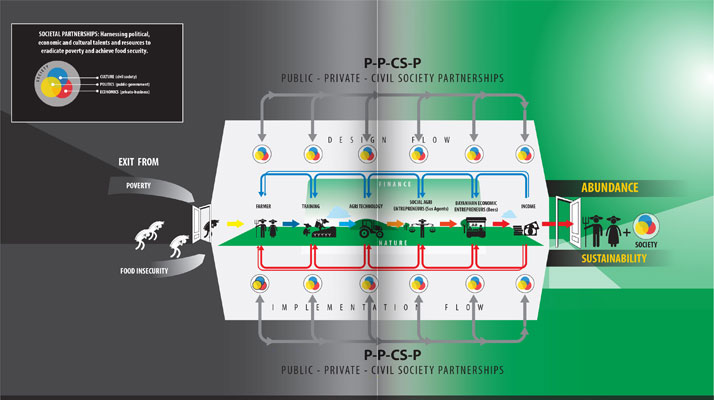The Flagship Project of BASE is the Zarraga Agriculture Program, or ZAP. ZAP is a poverty-eradicating sustainable agriculture program of the town.
Initially ZAP intends to assist all farmers, including non-organic farmers, to move out of poverty. Ultimately, the town plans to convert its whole agricultural area into organic farms.
With the help of technical assistance from SEA, the local government of Zarraga conducted an unprecedented survey of the needs and aspirations of 20% of its farmers.
Out of this survey, SEA and the government of Zarraga, together with the farmers, formalized ZAP in order to help the farmers of the town.
ZAP has 12 components listed below according to its logical, even if sometimes parallel flow, from the perspective of the farmer:
- Analytical Service (Soil and Plant Analysis)
- Research and Technology Incubation
- Demonstration Farm
- Training and Mentoring
- Finance
- Supply Logistics (Organic Seeds and Fertilizers)
- Irrigation
- Farm Roads
- Common Service Facilities
- Post Harvest Facilities
- Transportation
- Trading and Marketing
- Advocacy
Six of these components belong to the value chain of rice agriculture, which constitute 95% of farming in the town. They are training and mentoring for organic production, finance, supply logistics, irrigation, post harvest facilities, and trading/marketing. Figure 1 below illustrates the various components of the value chain solution ecosystem framework of ZAP.
 FIGURE 1 : The various components of the value chain solution ecosystem framework of ZAP
FIGURE 1 : The various components of the value chain solution ecosystem framework of ZAP
The other six components belong to the support ecosystem of the value chain of ZAP. These include analytical services, research and technology incubation, demonstration farm, road network, common service facilities, and advocacy. These other six components, in turn, are connected with larger ecosystems, including, for example, the scientific researches on organic agriculture, processing technologies found in many agricultural universities, and others.
Figure 2 below illustrates the support ecosystem that would enable the value chain of ZAP to function properly.
 FIGURE 2: The support ecosystem that would enable the value chain of ZAP to function
FIGURE 2: The support ecosystem that would enable the value chain of ZAP to function
